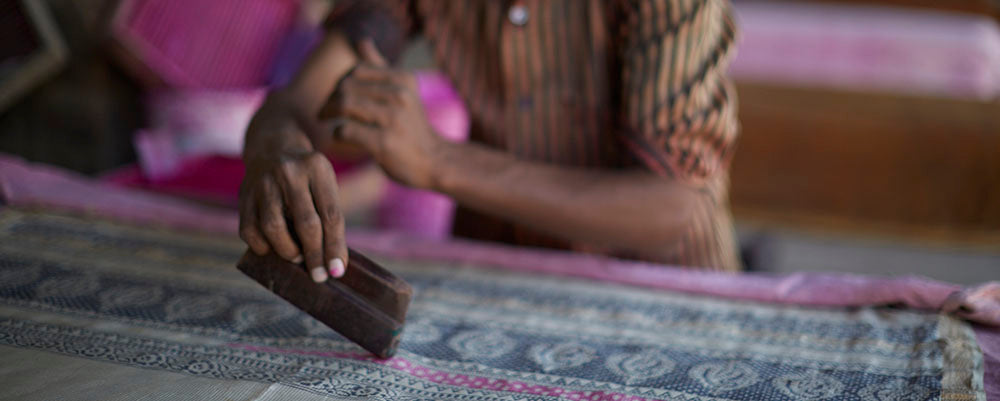
The graphic impact of a Bagh block print is due to the dramatic use of of red and black; a style which originates with the Bhil and Bhilala cultures residing in Madhya Pradesh, India. The printers of Bagh are Khatris who migrated south from Rajasthan during the Mughal incursions. They remained to take advantage of the high copper content of the Baghini river. Today, a few small studios still follow a traditional block printing process.

Light and medium weight cotton cloth is scoured and prepared with a complex mixture containing tannin. The cloth is printed with mordants, but as the mordants themselves give no colour during application, a bright pink dye is added - traditionally from the dhawda (flame of the forest) flower. This dye permits the artisans to check registration of the patterns and align overprints. Areas which appear pink during this initial stage will appear deep red when the cloth is finished.

Traditional dye methods include the fermentation of iron-water to give a black colour. Horseshoes and other scrap iron is added to a jaggery-water mixture in a process which can last between fifteen and thirty-five days. The distinctive blocks are carved from hardwood and can print thousands of impressions before needing to be recut.

Washing during the various stages of the printing process is still done by the riverside. Lengths of unfinished cloth with the distinctive pink colour are evidence of traditional artisans at work.
Maiwa works with Bagh craftspeople using traditional block printing techniques. The bold patterns are a proud and dramatic statement of the cultural heritage of this area.
